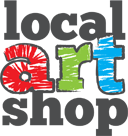The Beginner’s Guide to Oil Painting: Do’s and Don’ts
Welcome, Fellow Creatives!
Embarking on the journey of oil painting can be both exciting and a bit daunting. As an artist who’s been navigating this vibrant world for years, I’ve gathered a few nuggets of wisdom to share with you. Whether you’re picking up a brush for the first time or looking to refine your skills, here are some essential do’s and don’ts to keep in mind.
Do: Invest in Quality Materials
Starting with the right tools can make a world of difference. While it’s tempting to opt for cheaper materials, especially as a beginner, investing in quality paints, brushes, and canvases will pay off in the long run. High-quality materials provide better pigment, smoother application, and a more satisfying painting experience. Remember, you don’t need to break the bank—just find a reliable brand that suits your budget.
Don’t: Overload on Supplies
It’s easy to get carried away and buy every color and brush in the store, but starting simple is key. A basic palette of primary colors (red, blue, yellow), along with white and a few earth tones, is sufficient for creating a wide range of hues. The same goes for brushes; a few well-chosen ones will serve you better than a cluttered collection. Focus on learning the basics and expand your toolkit as your skills grow.
Do: Prepare Your Canvas Properly
Before diving into your painting, ensure your canvas is prepped and ready. If you’re using a raw canvas, apply a few coats of gesso to prime the surface. This creates a smoother, more receptive layer for the oil paint, ensuring better adhesion and longevity of your artwork. Even if you’re using pre-primed canvases, a light sanding and an additional coat of gesso can make a noticeable difference.
Don’t: Neglect Safety Precautions
Oil painting involves materials that can be hazardous if not handled properly. Always work in a well-ventilated area, and be mindful of the solvents and mediums you use. Some, like turpentine, can be quite toxic. Consider using odorless mineral spirits or natural alternatives. And remember, gloves are your friends—protect your skin from prolonged exposure to these substances.
Do: Practice Patience and Layering
Oil paint is renowned for its slow drying time, which can be a blessing and a curse. Embrace this characteristic by working in layers. Start with thin, lean layers (more solvent, less oil) and gradually build up to thicker, more oil-rich layers. This “fat over lean” approach prevents cracking and ensures a stable, beautiful finish. Patience is essential—give each layer ample time to dry before adding the next.
Don’t: Rush the Drying Process
It might be tempting to speed things along, but rushing the drying process can lead to disaster. Avoid using heat sources like hairdryers; they can cause uneven drying and even damage the paint. If you need to dry your painting faster, consider using drying mediums like alkyds or adding a small amount of siccative. However, remember that too much can alter the paint’s consistency and color.
Do: Experiment and Have Fun
Oil painting is a journey of exploration. Don’t be afraid to experiment with different techniques, styles, and subjects. Try out glazing, scumbling, or impasto. Explore portraiture, landscapes, or abstract art. The beauty of oil painting lies in its versatility and richness, so let your creativity flow and see where it takes you.
Don’t: Be Discouraged by Mistakes
Mistakes are an integral part of the learning process. Even seasoned artists encounter setbacks. If a painting isn’t going as planned, step back and reassess. Sometimes, what feels like a mistake can lead to a new discovery or technique. And remember, oil paint is forgiving—you can always scrape off a layer and start anew.
Final Thoughts
Oil painting is a timeless and rewarding art form. As you begin your journey, embrace the learning process with an open mind and a spirit of curiosity. With practice, patience, and passion, you’ll find your unique voice on the canvas. So, set up your easel, mix your palette, and let your creativity shine. Happy painting!
Feel free to reach out with any questions or share your progress—I’d love to see your creations and help you along the way!

